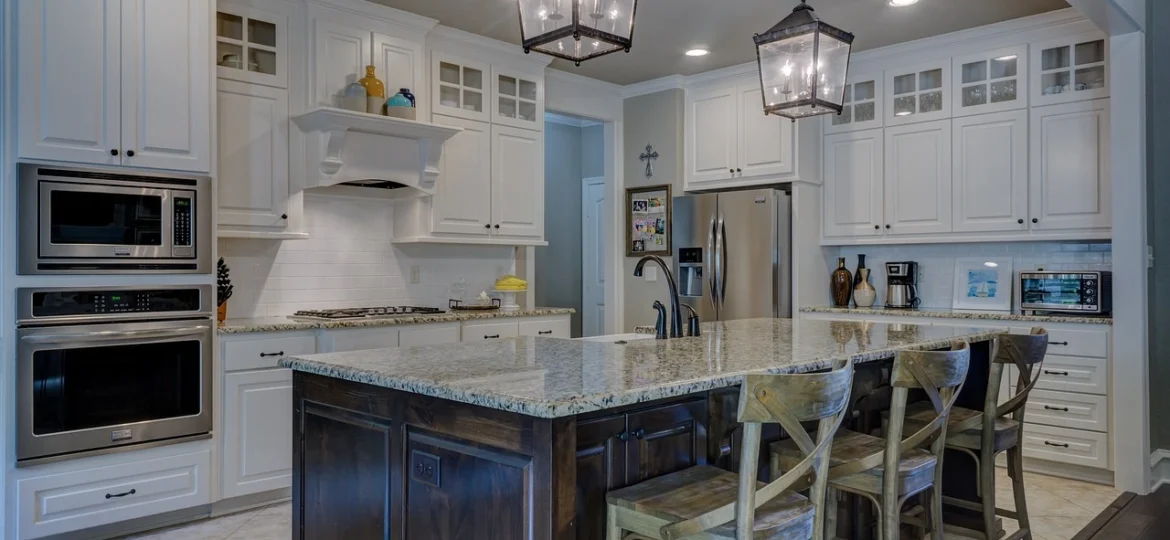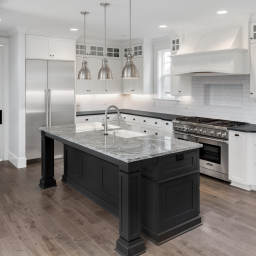
Limestone vs. Granite: What Is the Difference?
Both Limestone and Granite are often considered to be excellent choices for kitchen and bathroom worktops, flooring, and other similar applications in the home. What distinguishes these two natural stones, each of which has its own beauty and practicality? This in-depth article compares and contrasts Limestone and Granite slabs from every angle, including their uses, appearance, color range, durability, texture, and feel. This post will be helpful whether you are a homeowner planning a remodel or a contractor seeking for the best possible supplies for an upcoming job.
Table of Contents
Applications and Appearance
Slabs of Limestone and Granite have many practical uses beyond their attractive appearance. These stones have played an important part in human architecture for ages, whether for their aesthetic value as a kitchen countertop or their structural value as an external material. Explore their applications and distinguishing features with me.
- Limestone Slabs: Limestone is a popular material for outdoor applications including patios and pathways because to its low maintenance requirements and natural beauty. Its understated elegance is a welcome addition to any room. Limestone’s adaptability means it may be used to create both traditional and cutting-edge looks.
- Granite Slabs: Granite is a popular material for many different types of countertops due to its attractive look and durability. Its durability and resilience to heat and scratches are selling points. Granite slabs, which come in a wide variety of hues and designs, have the power to completely renovate a room.
Color Variations
As a powerful psychological and behavioral trigger, color is an essential component of interior design. Both limestone and granite come in a wide range of colors, giving homeowners and decorators the freedom to express their individuality via the design of their homes. Here is how the hues of these two gems diverge:
- Limestone’s Color Palette: Beige, cream, and light gray are typical for limestone slabs. Limestone is a great option for rooms that want a quiet and soothing environment due to its soothing color palette.
- Granite’s Vibrant Shades: In contrast, Granite slabs are available in a rainbow of colors, from black and red to blue and green. These vibrant colors can provide a space with a jolt of vitality and enthusiasm. Granite’s versatility allows it to be used in any color scheme or mosaic.
Durability and Strength
It’s crucial to know how long and how strongly stones like granite and limestone will last before making an investment. These characteristics not only determine the material’s durability but also its applicability. Explore the strength and durability of these two well-known stones:
- Limestone’s Durability: Because of its softness, limestone is easily damaged, especially in heavily traveled locations. Limestone, though, may survive for decades if cared for and sealed properly. Its relative softness is typically outweighed by its classic allure and soothing aspect, making it a go-to for individuals in search of sophistication.
- Granite’s Strength: In contrast, granite has a stellar reputation for its durability and ability to withstand heat, stains, and scratches. Its thick make-up makes it a good fit for high-traffic areas like kitchen counters. Due to its longevity, granite is a worthwhile investment that serves practical and aesthetic purposes.
Texture and Feel
The way something feels in our hands may have a major impact on how we relate to a certain area. Tactile sensation provides depth and nuance to our environments, whether we’re touching the smooth surface of a countertop or the rough roughness of a garden walk. Let’s have a look at the differences between Limestone and Granite slabs in terms of feel:
- Limestone’s Sensual Texture: Limestone’s smooth and sometimes porous texture exudes an easygoing, homey vibe. The irregularities and flaws that occur naturally in it make it unique and evocative, serving as a bridge to the natural world. Comfort and peace may be felt just by walking barefoot on a Limestone floor or running one’s fingertips down a Limestone wall.
- Granite’s Rich Feel: Because of the many minerals it contains, granite has a more grainy and sturdy appearance and feel. It can have a variety of textures and finishes, from smooth and polished to rough and textured. The luxurious and everlasting quality that granite exudes makes it a showpiece in any decor.
Conclusion
Limestone and Granite slabs seem very different, but the decision between the two should be based on more than just personal preference. These materials, ranging from the delicate beauty of Limestone to the hardiness of Granite, allow us to design homes that are uniquely suited to ourselves. It all comes down to how well the materials you choose fit your needs, tastes, and the story you want your space to tell, whether you’re drawn to the soothing tones of Limestone or the bright shades of Granite. Isn’t it about time you went stone-hunting and found the ones that really spoke to you?



